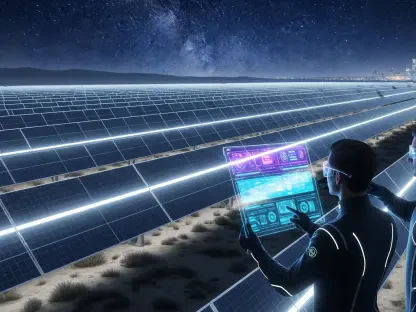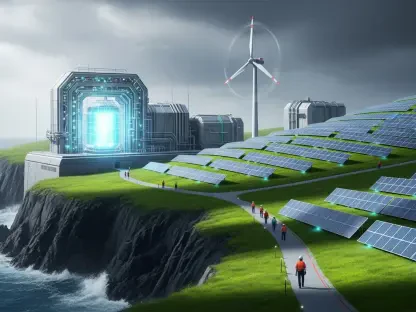What happens when the serene, wide-open spaces of Montana become the new frontier for tech giants hungry for power? Across the state, data centers are emerging as colossal energy consumers, poised to transform the grid in ways that could ripple through every household and business. With projections estimating a demand of up to 2,250 MW by 2030—nearly triple the current average daily peak load of 760 MW—the stakes for energy policy and equity have never been higher. This unfolding challenge promises to test the balance between economic growth and sustainable energy management in a region unaccustomed to such intense industrial demands.
The Rising Tide of Data Centers in Montana
The significance of this shift cannot be overstated. Data centers, with their sprawling server farms powering everything from cloud computing to artificial intelligence, are not just another industry setting up shop. They represent a seismic change for Montana’s energy infrastructure, a state historically defined by its rural character and modest power needs. NorthWestern Energy, the primary utility in the region, faces an unprecedented task: ensuring grid reliability while integrating massive new loads that could redefine the state’s economic and environmental future.
This story matters because it touches on core issues of fairness and foresight. As data centers eye Montana for their operations, the potential for skyrocketing energy costs and strained resources looms large for everyday ratepayers. The decisions made today—by utilities, regulators, and advocacy groups—will shape whether the state emerges as a model for balancing tech-driven growth with energy equity or struggles under the weight of unchecked expansion.
A Grid Under Pressure: The Scale of the Challenge
Data centers are not typical customers; they are energy titans capable of consuming power at a scale that dwarfs most industrial operations. NorthWestern Energy’s latest projections reveal a staggering reality: just three proposed facilities could require up to 2,250 MW by 2030, far exceeding the utility’s current peak capacity of 1,300 MW. This gap highlights a critical vulnerability in a grid designed for far smaller demands, raising urgent questions about how such growth can be accommodated without disruption.
Beyond raw numbers, the strain on infrastructure tells a deeper story. Building new generation and transmission capacity to meet this demand requires billions in investment, a cost that could cascade to consumers if not carefully managed. Rural areas, already underserved by robust energy networks, face the risk of becoming collateral damage in a rush to power urban tech hubs. The challenge lies in expanding the grid without sacrificing reliability for the communities that depend on it most.
Voices from the Frontlines: Stakeholders Speak Out
Amid this looming transformation, a chorus of voices is shaping the debate. Advocacy groups like the Montana Environmental Information Center and NW Energy Coalition, represented by Earthjustice, are pushing for accountability. “Data centers can’t be allowed to burden everyday Montanans with hidden costs,” a spokesperson insisted, advocating for a tailored tariff that forces large consumers to shoulder their fair share of expenses. Their concern centers on protecting low-income households from rate hikes tied to grid upgrades.
Regulators are also stepping into the fray. The Montana Public Service Commission (PSC), in a decisive ruling on September 3, mandated that NorthWestern Energy inform large-load customers—those exceeding 5 MW—of alternative supplier options. This move underscores a commitment to transparency and competition, ensuring that massive energy users don’t lock the state into unfavorable long-term deals. The PSC’s stance is clear: any agreement must demonstrably benefit all ratepayers over time, as required by state law.
NorthWestern Energy, for its part, is navigating a delicate balance. In a statement released on September 17, the utility emphasized its dedication to “supporting economic development while safeguarding existing customers” through a proposed large-load tariff. While no agreements with data center clients have been finalized, the company is actively exploring frameworks to integrate these loads without destabilizing the system. This measured approach reflects the complexity of aligning growth with responsibility.
Economic Promise Versus Energy Risks
The arrival of data centers brings undeniable economic potential to Montana. Job creation, infrastructure investment, and increased tax revenue are among the benefits touted by proponents of these facilities. In other states, such as Virginia, data center hubs have spurred local economies, with thousands of jobs tied directly and indirectly to the industry. Montana could see similar gains, providing a much-needed boost to rural communities eager for development.
Yet, the risks are equally tangible. Without strategic planning, the energy demands of these facilities could outpace NorthWestern’s current resources—1,065 MW of owned generation capacity and 1,070 MW in contracts—leaving the grid vulnerable during peak periods. Lessons from regions like Texas, where rapid industrial growth has led to reliability issues, serve as a cautionary tale. If Montana fails to anticipate and mitigate these challenges, the economic windfall could come at the expense of energy stability.
Moreover, the question of cost allocation looms large. Advocacy groups warn that existing customers, particularly vulnerable populations, could bear the brunt of infrastructure expenses if data centers are not held accountable through specific rate structures. Striking a balance between welcoming tech investment and protecting ratepayers remains a pivotal hurdle for policymakers and utilities alike.
Charting a Path Forward: Strategies for Equity and Sustainability
Addressing this energy crossroads demands innovative solutions. One key proposal is the development of a data center-specific tariff, complete with minimum load thresholds and collateral requirements. Such a framework would ensure that large consumers directly fund the costs of their integration, shielding smaller customers from rate increases. This approach has gained traction among stakeholders as a way to maintain fairness across the board.
Energy efficiency and renewable integration offer another vital avenue. By incentivizing data centers to adopt cutting-edge technologies and invest in clean power sources, Montana could align industrial growth with its sustainability goals. Interconnection agreements could mandate such measures, turning a potential burden into an opportunity for green innovation. Examples from states like California, where tech companies have partnered on solar and wind projects, provide a blueprint for success.
Finally, robust regulatory oversight and transparent planning are essential. Strengthening the PSC’s role in scrutinizing large-load agreements ensures that long-term benefits are prioritized over short-term gains. Collaborative resource projections for 2025 to 2031, potentially supported by NorthWestern’s merger with Black Hills Corp., must be communicated clearly to the public. Coupled with protective measures like subsidies for low-income ratepayers, these strategies can help Montana navigate the data center boom without leaving anyone behind.
Reflecting on a Critical Juncture
Looking back, the dialogue surrounding data centers in Montana revealed a shared urgency among utilities, regulators, and advocates to address an unprecedented energy challenge. The potential for grid strain and cost disparities had sparked intense debate, with each stakeholder bringing unique perspectives to the table. What stood out was the collective recognition that inaction was not an option.
Moving forward, the focus must shift to implementing structured tariffs and efficiency mandates that hold large energy consumers accountable. Policymakers and NorthWestern Energy should prioritize transparent collaboration, ensuring that grid expansions and economic benefits do not come at the expense of vulnerable communities. By learning from other regions and adapting to local needs, Montana has the chance to set a precedent for managing tech-driven energy demands with equity and vision at the forefront.









